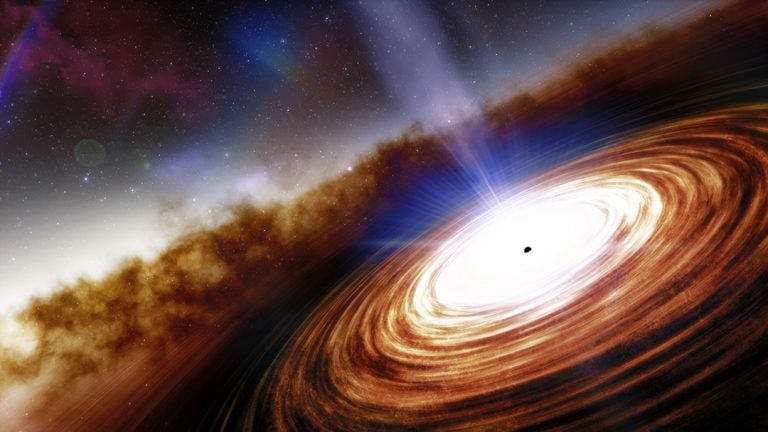Scientists find most distant quasar ever discovered

Scientists have found the most distant – and therefore oldest – quasar ever to be discovered.
The object could help shed light on the beginnings of black holes and how they are able to form.
Quasars are the most energetic and among the very brightest objects in the universe. They are thought to form when supermassive black holes eat up the matter that surrounds them, such as gas or stars, leaving a huge and swirling disc of debris surrounding them.
The new luminous quasar was found just over 13 billion light-years from Earth. That means it arrives with us from just 670 million years after the Big Bang, when the universe was just 5 per cent of its current age.
But its youth should not be taken as any suggestion that the object is small. The quasar is host to a supermassive black hole with the mass of 1.6 billion suns.
That poses a challenge for scientists, who do not fully understand how such a massive object can have formed itself in so little time. “Black holes created by the very first massive stars could not have grown this large in only a few hundred million years,” said Feige Wang, NASA Hubble fellow at the University of Arizona and lead author of the research paper, in a statement.
One story of the formation of black holes suggests that they form when a star explodes as a supernova and then collapses, with those black holes merging over time to become supermassive – but there would not seem to be enough mass around for that to happen so quickly.
Previous explanations have suggested that massive stars form early on using mostly hydrogen, and lack the other elements that are used in later stars, allowing them to form quickly and then provide fuel for a black hole. The other model relies on dense star clusters that collapse into a black hole at the beginning.
But the black hole at at the newly discovered quasar J0313-1806 is too big to be explained by either of those theories.
"This tells you that no matter what you do, the seed of this black hole must have formed by a different mechanism," said co-author Xiaohui Fan, Regents Professor and associate head of the UArizona Department of Astronomy, in a statement. "In this case, one that involves vast quantities of primordial, cold hydrogen gas directly collapsing into a seed black hole."
As well as its vast mass, astronomers found a fast outflow coming for the quasar, which is throwing out wind at 20 per cent the speed of light. “The energy released by such an extreme high-velocity outflow is large enough to impact the star formation in the entire quasar host galaxy,” said co-author Jinyi Yang, Peter A Strittmatter postdoctoral fellow of Steward Observatory at the University of Arizona.
A paper describing the findings will be published in The Astrophysical Journal Letters and can be read in pre-print form online.

Join our commenting forum
Join thought-provoking conversations, follow other Independent readers and see their replies
1Comments